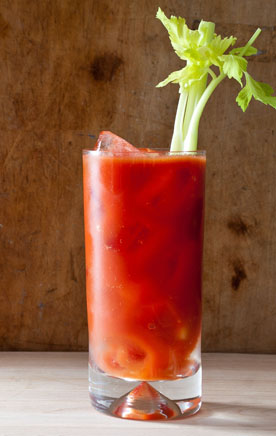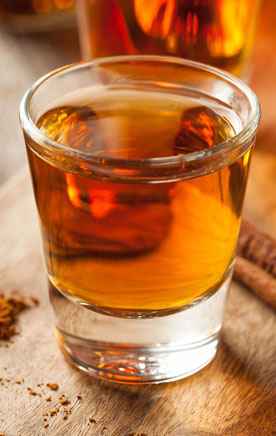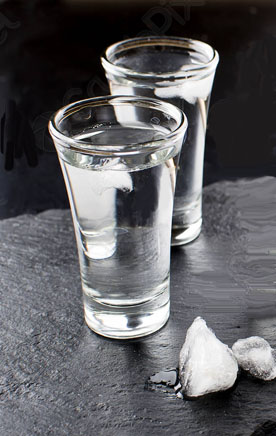Best Rye Whiskey

The Tasting:
The Fifty Best held a “blind” tasting of 19 rye whiskies with ten members of our spirits judging panel. The order of service was established beforehand by lottery. Strict tasting rules were applied. The rye whiskies were poured into fresh glasses from new sealed bottles, and served at room temperature. Each of the whiskies were judged and scored separately. Only ice water, unflavored unsalted crackers and chips were available to cleanse the palate.
The judges wrote down their impressions of each product on score sheets. The scoring was done on a 5-point system, with 5 as the highest. Double-Gold, Gold and Silver medals were awarded according to a set range of final point scores received from the judges. There were no Bronze medals awarded for this tasting. Medals are provided based entirely on merit and only to products judged worthy of such award.
The tasting notes below are summaries of the judges’ opinions, with all replicated commentary eliminated. The distilleries, states of origin, alcohol proofs and other tidbits are identified for each brand. Clicking on the brands' names will link to their websites.
|
DOUBLE GOLD MEDAL AWARDS |
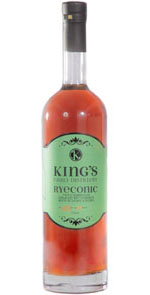 |
|
|
 |
|
|
 |
|
|
 |
|
|
 |
|
|
 |
|
|
 |
|
|
 |
|
|
 |
|
|
 |
|
|
 |
|
|
 |
|
|
 |
|
|
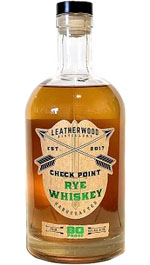 |
|
|
 |
|
|
 |
|
|
 |
|
|
 |
|
|
 |
The Rye Whiskey Revival
Historically, rye whiskey was the favored grain of the East Coast. George Washington even had the largest rye whiskey distillery in early America on his Virginia estate. By the 1780s, around 5,000 log still houses were operating in Pennsylvania and Maryland producing the whiskey that came to be known as “rye”. Mostly by German immigrants that had been using rye in the production of schnapps and vodka back in northern Europe.
Two different styles of rye whiskey developed during the colonial era: Pennsylvania or Monongahela-style, and Maryland-style rye. Since the bulk transportation of large amounts of grain was not practical during this era, the distillers made whiskey from the grain grown on their farm or from grains grown nearby. Corn was not generally native north of the southern edge of Pennsylvania; so the distillers made rye whiskey with no corn in it. Monongahela Rye was known for its ultra-high rye content and its full-bodied and spicy nature. Distillers operating in the southern part of America made Maryland style rye, a mixture of rye with some corn. The rye content in Maryland style rye tended to be about 65%, and it was notably sweeter and more mellow than its northern cousin.
Since the still was essentially a piece of farm equipment, it should be no surprise that by the late 1700’s, there were literally thousands of small grain distilleries each in New York, Pennsylvania, Virginia and Maryland. It is estimated that there were between 14,000 and 20,000 distilleries operating in the United States between 1810 and 1840. Rye was the most prevalent grain in colonial America. It was considerably more hardy than barley, and much easier to grow. Corn, or maize, was native to America, but only south of the Mason-Dixon line, and most of the population was to the north.
While the center of population in the United States remained east of the Appalachian Mountains, rye whiskey flourished. Shipping routes in the east favored rye whiskey over its cousin from Kentucky. The only major shipping routes for bourbon were down the river to New Orleans or overland through the mountains. As such, rye whiskey was the main style of whiskey consumed in the United States from the end of the Civil War until prohibition.
Back in the 1880’s, saloons were all the rage. There were thousands of them in the old American west. Much of the liquor sold were pretty mean homemade concoctions called rotgut or Firewater, (sometimes made with raw alcohol, burnt sugar and a little chewing tobacco), but the majority of saloons “imported” rye whiskeys from the Eastern states for their regular customers. Rye was not sold in "shots". It was sold in a small glass which normally held a gill (4 ounces) and cost a nickel. This price could be much higher in cities or for big name brand liquors. For example, a good quality bottle of rye whiskey in a nice hotel might be as much as $2 dollars. Rye was usually served straight, but the distinctive flavor made it a perfect mixer during the early years of the cocktail. Three of the most popular classic cocktails were originally created for rye whiskey — the Old Fashioned, the Manhattan & the Sazerac.
Before the Prohibition, there were over 50 brands of rye. When Prohibition outlawed the manufacture and sale of alcoholic beverages in 1920, many enterprising residents of small towns across America chose to become outlaws – They produced thousands of kegs per month, supplying Al Capone and other gangs who in turn filled the demand of speakeasies throughout Chicago, New York and all the way west to San Francisco.
By the time Prohibition ended, most American whiskey distilleries had ceased production. The few that existed were put at a massive competitive disadvantage to imported aged spirits. Boatloads of well-aged Scotch and Irish whiskies were waiting offshore in the northeast, truckloads of aged Canadian Whiskey were waiting to cross the border from Canada and ships full of mature rum were waiting in the Caribbean. The astute American distiller quickly realized that when getting back into the business, they would not be able to compete on quality, so they would have to compete on price.
The bourbon distilleries in Kentucky were better situated to build large facilities to garner economy of scale. There was plenty of land and a very well-developed rail system. Conversely, most of the rye distilleries in the east were on small farm plots with poor infrastructure and were not well funded. Additionally, the first farm subsidy bill supported corn but not rye. As a result, it was reborn in 2006. For the first time in 87 years, modern pioneers across the country dusted off old family records, recreating great grandpa's handed-down recipes and started producing rye whiskies deeply rooted in tradition. A decade ago in this country there were only six brands of rye. Now you can find over 650 brands, and rye whiskey has once again become one of the most popular go-to craft spirits.
Rye whiskey is made from fermented mashed grain that is at least 51% rye grain by law, sometimes with barley, corn and other grains blended in. Many of the newer, small-batch brands use 100% rye. Ryes must be distilled at less than 80% ABV (160 proof), and aged in new, charred oak barrels, used one-time only. Ryes labeled as "straight" must be aged for at least two years.
Rye whiskies are typically dry, peppery, and grainy, with complex flavors bursting with fruit, walnuts, and spice. This distinctly bold assertive character is embraced by a dedicated and continuously growing following of discerning whiskey fans.
Disclaimer: This section of the website is intended for visitors 21 years of age and older.
If you are not of legal drinking age, please exit by clicking here.
Please drink responsibly!




